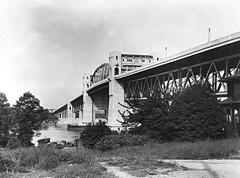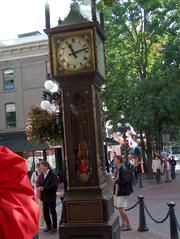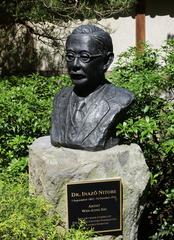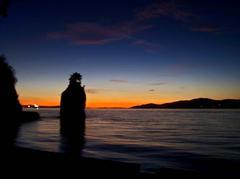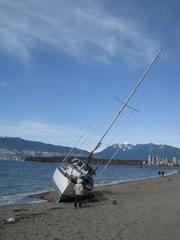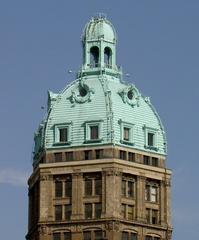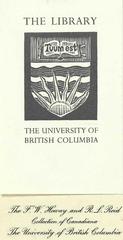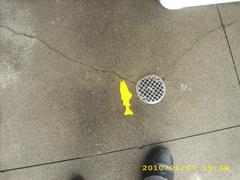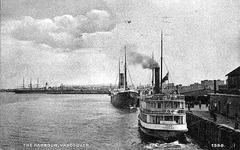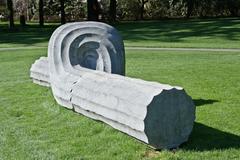
Ben Franklin Submersible Visiting Hours, Tickets, and Vancouver Historical Sites Guide
Date: 03/07/2025
Introduction to the Ben Franklin Submersible and Its Significance in Vancouver
The Ben Franklin submersible—officially the Grumman/Piccard PX-15—is an extraordinary artifact of mid-20th-century oceanographic exploration and research into human endurance. Conceived through the collaboration of Swiss oceanographer Jacques Piccard and Grumman Aircraft Engineering Corporation, this mesoscaphe was constructed between 1966 and 1968. Designed to support a six-person crew at depths of up to 4,000 feet, its most renowned mission—a 30-day drift along the Gulf Stream in 1969—revolutionized our understanding of ocean currents and the psychological challenges of confined environments, contributing directly to NASA’s research for long-duration spaceflight.
After years of varied use and storage, the Ben Franklin found a new home at the Vancouver Maritime Museum in Vanier Park. As a preserved outdoor exhibit, it connects visitors to an era of maritime innovation and scientific discovery. This guide details everything you need to know about visiting the Ben Franklin submersible, including hours, ticketing, accessibility, its historical background, and nearby attractions. For more details, visit the Vancouver Maritime Museum and learn about its legacy (Kiddle).
Table of Contents
- Historical Background of the Ben Franklin Submersible
- The 1969 Gulf Stream Mission and NASA Collaboration
- Post-Mission Fate and Arrival in Vancouver
- Significance and Legacy
- Visiting the Ben Franklin at the Vancouver Maritime Museum
- Museum Experience and Nearby Attractions
- Frequently Asked Questions (FAQ)
- Summary and Key Visitor Tips
- References and Further Reading
Historical Background of the Ben Franklin Submersible
The Ben Franklin (PX-15) is a groundbreaking mesoscaphe designed for extended oceanographic research. Built in Switzerland by Jacques Piccard, with final assembly in Florida, it was the first submarine constructed to meet American Bureau of Shipping (ABS) standards, enhancing safety and engineering excellence (vanmaritime.com; nauticapedia.ca).
Measuring nearly 49 feet in length and weighing 130 tons, the vessel could support a six-member crew for up to 30 days underwater. Its primary mission: to drift with the Gulf Stream at depths between 600 and 2,000 feet. Notably, the Ben Franklin featured 29 observation portholes—a rare design insisted upon by Piccard for maximum ocean observation, despite engineering reservations about structural integrity (vanmaritime.com).
The 1969 Gulf Stream Mission and NASA Collaboration
On July 14, 1969, the Ben Franklin embarked on its most legendary voyage from Palm Beach, Florida. Over 30 days, it traveled 1,444 miles along the Gulf Stream, resurfacing south of Halifax, Nova Scotia (vanmaritime.com; usni.org).
This mission was historic for several reasons:
- Longest Crewed Submersible Drift: A record-setting continuous underwater drift.
- NASA Collaboration: NASA placed an observer on board to study the psychological and physiological effects of extended confinement—findings that have informed long-duration spaceflight, including International Space Station and Mars mission planning (usni.org).
- Notable Crew: Among the crew was Robert Ballard, who would later discover the Titanic’s wreck (vanmaritime.com).
Post-Mission Fate and Arrival in Vancouver
Following its landmark mission, the Ben Franklin made several more dives before running aground in the Bahamas in 1971. It was later acquired by Vancouver businessman John Horton, who hoped to repurpose it for commercial or Arctic research. When those plans fell through, the vessel sat idle on Vancouver’s North Shore for nearly three decades (usni.org; nauticapedia.ca).
In 1999, the submersible was donated to the Vancouver Maritime Museum. Restoration under director James Delgado returned the vessel to public view, and by 2002, it was permanently displayed outdoors at the museum entrance (usni.org; vanmaritime.com).
Significance and Legacy
The Ben Franklin is a rare survivor from the golden age of ocean exploration. Its 1969 mission remains a pivotal moment in both oceanography and space research, helping shape our understanding of human endurance in extreme environments. The vessel’s cultural imprint extends to the arts—such as inspiring the ambient album “Mesoscaphe” by Mathieu Ruhlmann and Celer (wikipedia.org).
As an outdoor exhibit in Vancouver, the Ben Franklin connects the city’s maritime identity with global scientific achievement, offering visitors a direct link to remarkable feats of human ingenuity (Vancouver Maritime Museum).
Visiting the Ben Franklin at the Vancouver Maritime Museum
Location and Access
The Ben Franklin is displayed outside the Vancouver Maritime Museum in Vanier Park, accessible by public transit, car, or boat, with ample parking and scenic waterfront views (thebestvancouver.com).
Visiting Hours
- Open daily from 10:00 AM to 5:00 PM.
- Last admission at 4:30 PM.
- Hours may change for holidays or special events—check the museum’s website for updates.
Tickets and Admission Prices
- Tickets must be purchased online via the museum’s official website; no on-site ticketing is available.
- Pricing: Adults $18 CAD, seniors (65+) and students $15 CAD, youth (6–17) $10 CAD, children under 6 free.
- Memberships: Offer unlimited annual access and discounts.
Viewing the Submarine
- Exterior Display: The Ben Franklin is displayed outdoors for close-up viewing. Its size and numerous portholes illustrate the challenges of deep-sea research (bosunsmate.org).

- Interior Access: As of July 2025, the interior remains closed to preserve the vessel. However, immersive virtual tours and 360° visual experiences are available both online and at the museum (bosunsmate.org; vanmaritime.com).
Accessibility
- The outdoor exhibit is wheelchair accessible, with paved pathways and ramps.
- Some indoor areas may have limitations; contact the museum for details or to arrange specific accommodations.
- Assistive listening devices and descriptive tours are available upon request.
Health and Safety Policies
- The museum follows local health guidelines. Check the website for current COVID-19 policies, which may affect capacity or require masks.
Special Events and Guided Tours
- The museum regularly offers guided tours, expert talks, and family-friendly workshops focused on the Ben Franklin and maritime history. Event schedules and ticketing can be found on the museum’s calendar.
Museum Experience and Nearby Attractions
- Complementary Exhibits: Explore the historic St. Roch ship and interactive displays at the Children’s Maritime Discovery Centre (vancouverplanner.com).
- Outdoor Artifacts: View anchors, shipwreck relics, and vintage vessels in the museum’s outdoor area (eventcaptain.com).
- Family Activities: Enjoy hands-on exhibits like the model tugboat wheelhouse and marine habitat explorations (thebestvancouver.com).
- Heritage Harbour: Adjacent to the museum, this area displays vintage wooden boats with interpretive signage.
- Vanier Park: Ideal for picnics, walks, and panoramic views of Vancouver’s skyline and waterfront.
Frequently Asked Questions (FAQ)
Q: Can I go inside the Ben Franklin submarine?
A: Interior access is currently closed for preservation, but virtual tours are available both online and at the museum.
Q: Are guided tours available for the Ben Franklin exhibit?
A: Yes, the museum offers guided tours and special events. Check the website for schedules.
Q: Is the exhibit accessible for visitors with disabilities?
A: The outdoor area, including the Ben Franklin, is wheelchair accessible. For specific accessibility needs indoors, contact the museum.
Q: How do I purchase tickets?
A: All tickets must be purchased online in advance through the museum’s website.
Q: What are the museum’s hours?
A: Daily, 10:00 AM–5:00 PM (last admission at 4:30 PM). Check for variations on holidays.
Q: Is photography allowed?
A: Yes, photography is permitted for outdoor exhibits.
Summary and Key Visitor Tips
A visit to the Ben Franklin submersible at the Vancouver Maritime Museum immerses you in a pivotal chapter of oceanographic and human exploration history. From its innovative design and NASA-supported 1969 Gulf Stream mission to its preservation as a museum artifact, the vessel symbolizes scientific curiosity and endurance. While interior access is restricted, virtual tours and museum events offer deep engagement. With accessible facilities, guided tours, and nearby attractions within Vanier Park, the museum is ideal for families, history buffs, and maritime enthusiasts alike.
Plan your visit:
- Check the Vancouver Maritime Museum’s website for current hours, ticketing, and event information.
- Download the Audiala app for guided audio tours and stay connected via the museum’s social media channels.
The Ben Franklin submersible stands as a beacon of human curiosity and resilience—discover its story on your next Vancouver visit.
References and Further Reading
- Ben Franklin (PX-15) – Kiddle Encyclopedia
- Vancouver Maritime Museum – Ben Franklin Exhibit
- US Naval Institute – Ben Franklin Submarine: History and Visiting Information
- Nauticapedia – Ben Franklin Submarine Details
- The Best Vancouver – Ultimate Guide to Vancouver Maritime Museum
- Bosunsmate.org – Ben Franklin Virtual Tour
- Vancouver Planner – Vancouver Maritime Museum
- Event Captain – Ultimate Guide to Maritime Museum Vancouver








